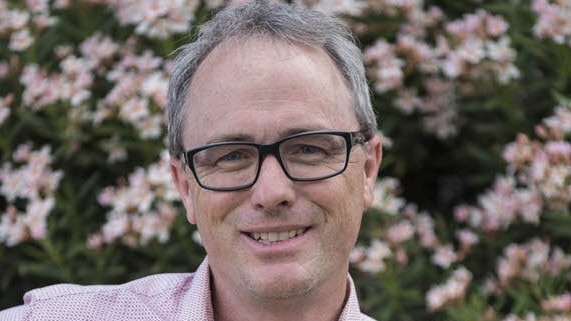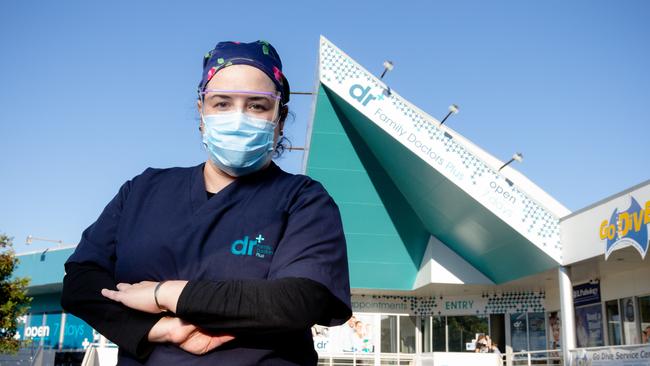‘Desperation money’: Locum doctors on packages worth $1m a year as system crumbles
One of Queensland’s top GPs says “desperation money” is being thrown at fill-in doctors instead of the State Government resourcing its own medics after it was revealed some were earning packages worth $2700 a day.
QLD Politics
Don't miss out on the headlines from QLD Politics. Followed categories will be added to My News.
Queensland taxpayers are funding astounding pay packages worth $1m a year to fly-in locum doctors as the government scrambles to prop up a health system crumbling under a chronic doctor shortage.
A Sunday Mail investigation has discovered locums have been recruited to rescue hospitals on the brink of collapse as they operated without a doctor and patients were being turned away.
The move to throw “desperation money” at visiting doctors rather than resource homegrown medics has been slammed by some of Queensland’s healthcare leaders.
A typical Queensland Health job advertisement on medical recruitment site Prescript calls for rural generalists for Wide Bay at $2700 per day.
The packages include accommodation for doctor and family, a hire car and free flights.
Job site boss James Hill said that while most locums would stay a few months, some could work for a year or more.
Private sector job advertisements also show the scarcity of specialised doctors in the state, with calls for radiologists to work as locums on the Sunshine Coast for up to a staggering $4000 per day – $20,000 a week – working Monday to Friday only, with all the perks added on.
The government’s spend on locums is rising, with $34m paid from January to March this year.
In 2021 the total outlay was $118m.

Queensland Health doctors are banned from taking up the government locum positions.
“Desperation money is being thrown at fill-in doctors instead of the government resourcing their own medics,” Royal Australian College of General Practitioners Queensland chair Bruce Willett said.
“A GP was working at Childers Hospital doing double shifts, working all day and then all night. There was no one else there to tend to patients.
“When they asked Queensland Health to send help, they said they didn’t have anyone to send. “The doctor couldn’t cope and was forced to leave, then locums arrived.
“We are now seeing the results of decades of chronic underfunding of general practice.
“This is having an impact on hospital services. The artificial divide between state and Commonwealth responsibilities for health needs to be broken down.”
Before the arrival of fly-in locums, patients at Childers were being treated by nurses who were advised via telehealth or they were sent to Bundaberg Hospital until locums were recruited in May.
Queensland Health said it was the job of each Hospital and Health Service (HHS) to manage services and engage locums.
Rural Doctors Association Queensland president Matt Masel said the thousands a day paid to locums was common as they were in short supply and were setting the price point.
“This isn’t reflected in an increase in offers for salaried roles,” he said.

Emergency doctors insist that the doctor deficit, which is pushing frontline medics to breaking point, is not simply due to Covid and pandemic sickness.
“This workforce crisis is due to poor planning over many years. While it has been exacerbated by sick leave and low morale during the pandemic, it was not caused by Covid-19 alone,” Australasian College for Emergency Medicine president Clare Skinner said.
“While continuing to ensure the highest levels of patient care, there needs to be focus on refining the processes required for practitioners who have trained overseas to be approved by the Australian Health Practitioner Regulation Authority (AHPRA).”
Australian Medical Association Queensland president Maria Boulton said the Palaszczuk government’s 10-year medical practitioner workforce plan, launched in 2016, identified hard-to-fill vacancies in psychiatry, obstetrics and gynaecology, general medicine, general surgery, orthopaedics and paediatrics.
“But six years on, we’ve gone backwards. The plan identified psychiatry as a priority area in 2016 but six years on we have critical shortages in this area,” she said.
“We are also facing an emerging shortage of GPs as fewer doctors in training are electing general practice as their specialty.
“The workforce strategy has to be done in collaboration with the Commonwealth and stakeholders to ensure the training supply meets the workforce needs.
“We don’t want to see short-term, shortsighted proposals that undermine the supply of doctors to regional communities.
“What Queenslanders need is more doctors and access to them wherever they live in the state.”

Federal government data shows the number of full-time medical practitioners in Queensland in 2016 was 19,896, rising to 22,618 in 2020.
Dr Masel said the salary structure and conditions for doctors in permanent roles needed to be more attractive and there was a desperate need for a revamp of Medicare to make general practice more enticing.
Acting Health Minister Steven Miles, in a response to health leaders’ claims, said the Palaszczuk government had spent more than seven years investing and growing Queensland’s health workforce.
“Since 2015 we’ve hired more than 15,000 extra frontline health workers, including 3106 additional doctors, an increase of almost 40 per cent,” he said.
“At this month’s meeting of State and Territory Health Ministers, we discussed a number of short and long-term measures to ease pressure on hospitals across the country, including workforce strategy and planning.
“With national demand for health services and clinicians reaching unforeseen levels during the pandemic, the competition for doctors is stronger than ever.”

Mr Miles said that workforce challenges had been exacerbated by the former Morrison government’s Medicare rebate freeze and failure over the past decade to properly fund primary care.
But Dr Boulton said “the distribution of the medical workforce, including doctors in hospitals, GPs and other specialists, continues to be a challenge that the State government wipes its hands of and blames on the Federal government”.
“Let’s see the government divert the funds from the failed $2m tradie incentive program to the medical workforce,” she said.
WHAT DOCTORS WANT
* Training supply to meet workforce needs
* Improved AHPRA approval processes for practitioners trained overseas
* Updated salaries and incentives for permanent staff doctors
* Training pathways to offer more general practice rotations and exposure
* More training hospitals outside of coastal areas and in rural areas
* Investment in general practice to ease patient overflows to hospitals
* Better collaboration at all levels of government
SPECIALTY SHORTAGES
* Radiology
* Psychiatry
* Obstetrics
* General practice
* General surgery
* Paediatrics
* Orthopaedics





